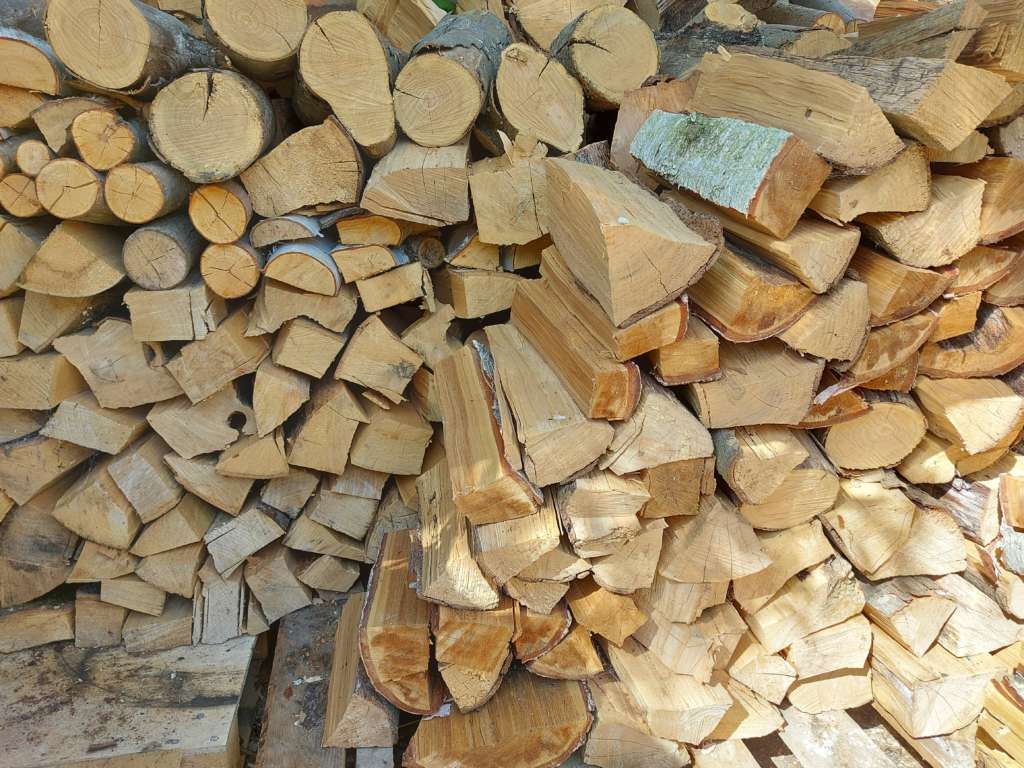New Government Guild lines 2020 – In accordance with new government guidelines customers should be aware that wood that has not been sufficiently dried (more than 20% moisture content) is not suitable for burning until it has been dried. You should not burn wood until it has a moisture content of 20% or less.
Wet wood contains moisture which creates smoke and harmful particulates when burnt. As well as being harmful to your health and the environment, this can damage your stove and chimney and is an inefficient way to heat your home. Dry it in a sunny, well-aired space for at least two years, keeping rain off in the winter. Radial cracks and bark that comes off easily suggests wood that is ready for burning. Test the wood when you think it is ready for burning, ideally with a moisture meter. First calibrate the meter and then measure a freshly split surface to get the best reading.

How to store firewood outside
In the cold winter months, your fire or log burner will require a ready supply of quality, dry (seasoned) logs to work effectively. In this article we consider the best options for storing your logs outside in a practical, convenient and safe way that will keep them dry all winter long.
1. Stack Logs Neatly: Seasoned logs are traditionally stacked neatly, close to (not touching) a wall or fence, it is important to be quite precise as tight stacking will ensure that only the top layer will get damp if it rains.
2. Consider Location Carefully: Think about the location, if the prevailing winds usually blow rain in a certain direction then place the logs in an area that it as sheltered as possible; remember to always place them on a flat and stable surface.
3. Avoid Tree Cover: Don’t place log stacks under trees as these will drip water down and also avoid low lying areas which can be prone to dew, mist or fog.
4. Don’t Leave Logs In A Heap: Never just dump the logs in a heap (especially on grass)